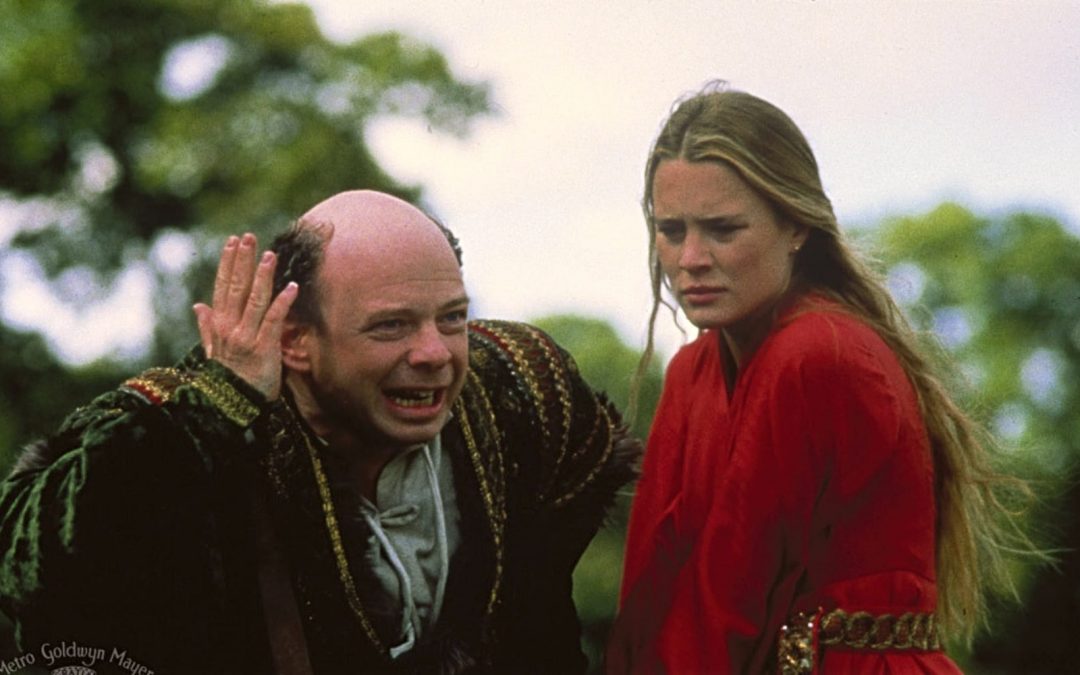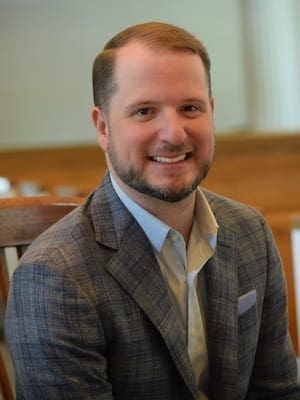My young daughters love the movie, “The Princess Bride.”
They copy the fast-paced bantering of Billy Crystal and Karol Cane as Miracle Max brings Cary Elwes’ character, Westley, back from death.
They shout “as you wish” to one another while rolling down hills.
They even mimic the rhyming of Andre the Giant as his jovial personality shines through the treacherous scenes.
One line that has always stuck out to me is when Vizzini, played by Wallace Shawn, continuously says something is “inconceivable.”
To which Inigo Montoya, played by Mandy Patinkin, responds, “You keep using that word. … I do not think it means what you think it means.”
I feel as if progressive churches love to use the words “welcoming and affirming,” but do not grasp what those words say and don’t say about the inclusion of LGBTQ+ people.
Churches must not only be inclusive in words but in their public actions as well. Queer members should participate in all of the same social and spiritual rituals offered to straight people in order for a church to be unbelievably and inconceivably inclusive.
One way my congregation has sought to grow as an inclusive community was by ordaining to the gospel ministry our youth minister, the church’s first openly gay ordinand.
The ordination service provided a platform to celebrate vibrant inclusivity as the ordinand and his husband kissed while he placed a red stole signifying the ritual ordination and officially conferred the title of reverend around his husband’s neck.
And this act of love and commissioning followed an exceptionally thoughtful and provocative sermon given by the guest proclaimer about the Ethiopian eunuch being the “sexual other” who influenced the life of Philip, the evangelist with perceived social and religious power.
But it was the eunuch, who was already in a rather powerful role as the treasurer of Queen Candace and who pursued God and requested to be baptized into the work of Christ in the world (Acts 8:26-40).
The proclaimer made the point that the ordinand, who is gay, sought to be included among all ministers who had previously been ordained, called and affirmed by the church. It was a deeply meaningful service.
The ordination was a beautiful and important time of public calling and, as one gay congregation member told me following the service, a moment when the words “queer,” “eunuch” and “sexual other” were spoken many times from the pulpit, and the walls didn’t cave in.
After the ordination service, I asked myself, “As a progressive Baptist church, are we really open and affirming?”
Due to the ordination of an openly gay man, I think we are closer than we were before. But more can be done to include LGBTQ+ individuals and families in all areas of our church’s work and witness.
Public acts of ordination should be something all welcoming and affirming churches are doing.
Many churches use words of welcome and claim to value diversity, but actually including LGBTQ+ persons in the life and leadership of the church is difficult and often overlooked.
Churches who hope to be truly places for equal opportunities for LGBTQ+ people need to know the difference between diversity and inclusion.
Many progressive church leaders use these terms interchangeably and often make the mistake of thinking diversity and inclusion are one in the same.
Diversity encompasses all the ways people can be different from each other, like race, ethnicity, gender, age, sexual orientation, disability, socioeconomic class and level of education, but doesn’t require churches to treat these diverse people as equal.
Many churches claim to be diverse while welcoming LGBTQ+ folks into the church, but do not provide the same opportunities for leadership and participation as they do for straight and cisgender members.
Inclusion happens when all people have equal and meaningful opportunities to participate and contribute regardless of their differences, and without having to hide those differences or conform to the dominant ideology.
Although diversity is required for inclusion, diversity is simply being invited to the table. Inclusion, on the other hand, is being asked to plan the event and invest in the community.
Are we, as “inclusive” churches, simply practicing diversity and stating we are welcoming and affirming without our LGBTQ+ friends actually having a prominent place in leadership and service?
Or are we truly including others in the planning and implementation of our relationships, learning about and being open to the work and lives of LGBTQ members?
I struggle with churches that use “welcoming and affirming” as an identifier of their inclusivity.
For me, being “welcoming and affirming” is to say implicitly that the power structures in the church are allowing LGBTQ+ people to come in and participate, but only at the whim of the dominant culture in the church.
But it is not up to the leadership and those in power to determine if the “sexual other” should be included among the followers of Jesus.
Remember, it wasn’t Philip who “let” the Ethiopian eunuch into the church of baptized believers. The eunuch saw the pool of water by the side of the road and didn’t see any reason not to be baptized into the community of Christ.
The same waters of baptism that washed over members of the institutional church for thousands of years are the same waters washing over vibrant LGBTQ+ people and their equal inclusion and participation in all aspects of Christian life and worship.
Now, we can’t simply dispose of the words “welcoming and affirming.” These words signal to the LGBTQ+ community that churches are inclusive.
Yet, churches must be confidently and courageously clear that they are active allies and are inclusive in all aspects of the life of the church in our still predominantly straight culture.
Queer people are constantly coming out to their families, their co-workers and their church communities. LGBTQ+ people are continuously coming out to a straight society.
The church can, and should, be the place were queer people can be who they are without the need to pull the church along beside them. Churches should be a place of welcome where everyone knows they are included.
Unfortunately, not everyone knows if a church is truly inclusive. Many churches have signs and websites that say, “Everyone Welcome,” while they only include and welcome people just like them.
LGBTQ+ folks will know a church really is inclusive when they live out their wide welcome by ordaining queer ministers, by dedicating children of gay and lesbian parents, by sharing the pulpit with LGBTQ+ proclaimers, especially those who are trans, and by openly performing weddings for queer couples in the same sanctuary where members worship an inclusive and loving God.
I realize all of this sounds inconceivable in a time when LGBTQ+ people still have to “come out” in many places of their lives.
And yet, many of us see society moving quickly in its acceptance of queer individuals and families.
This means, we might see a day when LGBTQ+ people are treated equally and “coming out” never needs to happen. But, until that time comes, churches must lead by example by being places of inconceivable inclusivity.
Editor’s note: This article is part of a weeklong series. Previous articles in the series are:
How to Make Your Church Safe for the LGBTQ+ Community by Kyndall Rothaus
Finding Common Ground Amid Contentious Debates by Holly Hollman
Why Your Church Should Cultivate Their Queer Imagination by Cody J. Sanders
When You Need Christ’s Love, Leave It to The Samaritans by Paige Hardy
Why Church Volunteers Need Training to Work with Transgender Youth by Justin Joplin
Court Cases Foreshadow Dangerous Times for LGBTQ Equal Rights by Don Holladay
Unsure About Accepting LGBTQ Folks? God Gave You the Keys by Jim Dant
The Experience of Christian Parents of a Christian Gay Child by Greg and Kelly Otis
Crossing Chasm That Seemingly Divides Bible, LGBTQ Loved Ones by Preston Clegg


